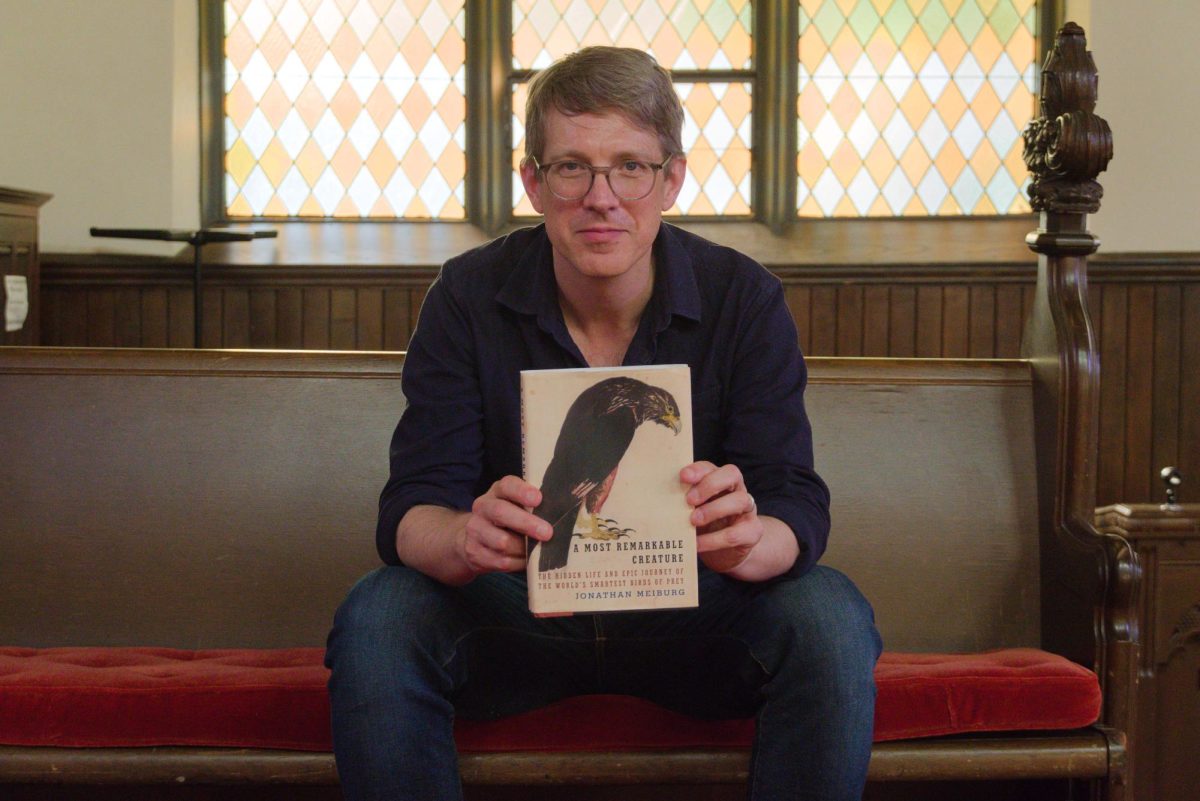In May 2004, Hope Kurtz died in her sleep from heart failure. Within 12 hours her husband Steve Kurtz had been arrested and incarcerated by the FBI on charges of bioterrorism. The film “Strange Culture” is the story of the hypersensitivity of the federal government in a post 9/11 world.
The “evidence” that the FBI considered incriminating came from an art project. In the months before his arrest, Steve, Hope and the rest of the theater and art collective, Critical Art Ensemble, were preparing an exhibit on Genetically Modified Food (GMOs) in America. As props to their art work, the team employed scientific equipment and basic bacterial specimens as models for their art.
The film begins with a dramatization of Hope, Steve and the other members of the Ensemble. As it progresses, the audience picks up on the nuances of the artists’ connection to their work and the relationship between Steve and Hope.
Hope Kurtz, played by Tilda Swinton, acts as a collaborator, artist and fervent activist against the United States’ policies concerning GMOs. The subsequent scenes, following Hope’s death, revolve around the FBI’s extreme response to Steve Kurtz and the ensuing legal battle which ultimately consumed the next six years of Kurtz’s life.
After his arrest on the night of his wife’s death, the FBI charged Kurtz (played during the dramatization by Thomas Jay Ryan) as a suspected “bioterrorist”. They raided his home and confiscated his artwork, books, manuscripts and science equipment.
It is at this point in the film that the real Steve Kurtz makes his entrance. Throughout the rest of the film, scenes switch between Kurtz and the actor who plays him, Ryan. Kurtz describes his experiences, which Ryan then portrays.
While technically a documentary, the use of actors bridges the gap between feature film and personal account to create a hybrid experience where one sees the trauma of Kurtz’s experience while connecting to the actual Kurtz through his commentary.Bioterrorism, which Kurtz was originally charged with, relates to both the threat of biological weapons and the greater American schema of terrorism, including the Islam phobia. One particularly noteworthy scene portrays an exchange between the FBI agents and Kurtz. One agent, played by actress Marcie Prohofsky, presents Kurtz with a copy of the invitation to his art exhibition and accusingly asks, “Is this Arabic writing?” From there the film takes off as an account of all of the extraordinarily ignorant policies and protocols which the government has constructed as a result of the Patriot Act.
The director of the film, Lynn Hershman Leeson, breaks the boundaries between actors playing their roles and engaging on the deepest levels what their roles mean to them as human beings—some of the scenes are the actors’ own commentary on the subject. While at first their impromptu interviews come across as almost a “behind-the-scenes” look at making “Strange Culture,” Leeson employs the views and opinions of Ryan and Swinton to stimulate the dialogue surrounding the material being discussed in the movie. For example, the issue of GMO food is applicable to everyone, even the actors who are seemingly removed from the real-life story. In one scene, Tilda Swinton—speaking as herself—explains the terrifying reality that Americans do not know what they are eating. In her home region of Scotland, GMO’s have been completely banned. In the end, the film had a dual message—America needs to reexamine its attitudes, both toward food and anti-terrorism. Although vastly different at first glance, both of these issues are tied together under government regulation and reaction. It is rare that a director is able to incorporate every aspect of the factual account of an event, or series of events as the case may be, while keeping the exposed emotional portrayal available and very real for the viewer. In both cases Leeson triumphs and as the film draws to a close, the viewer is left with a feeling of empathy and rage—empathy for every person who fell victim to the extremist policies of the Federal Government, and rage toward the government for those policies.


















































